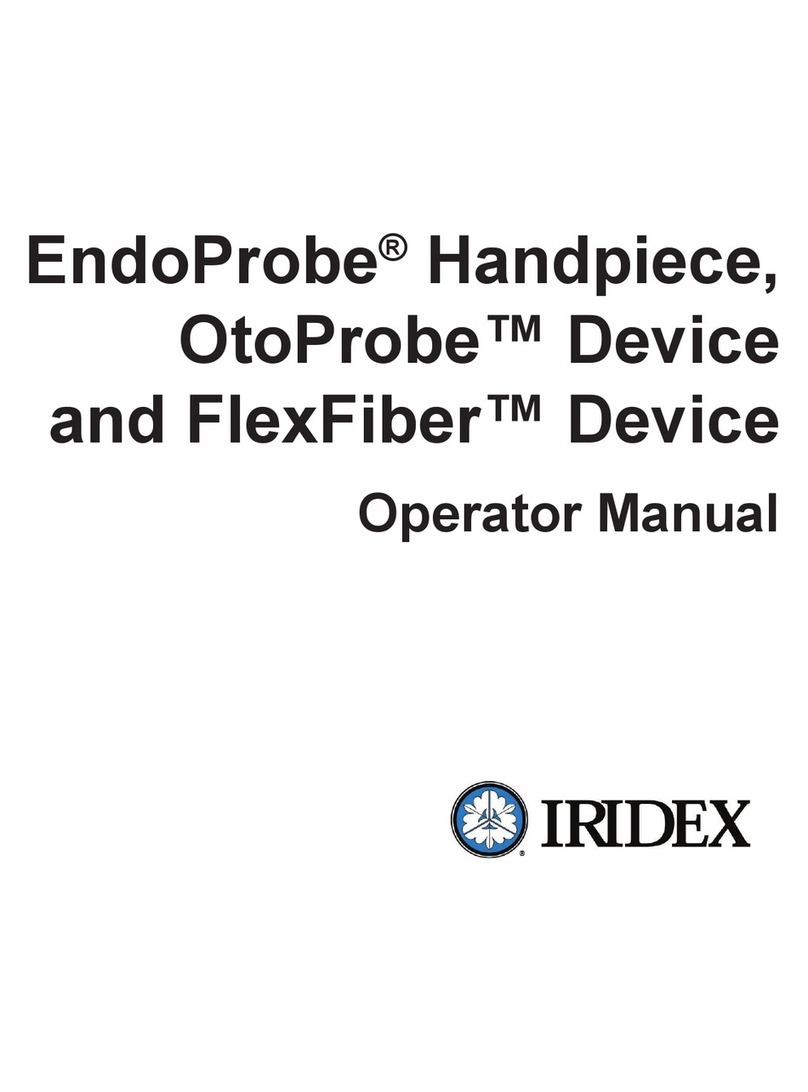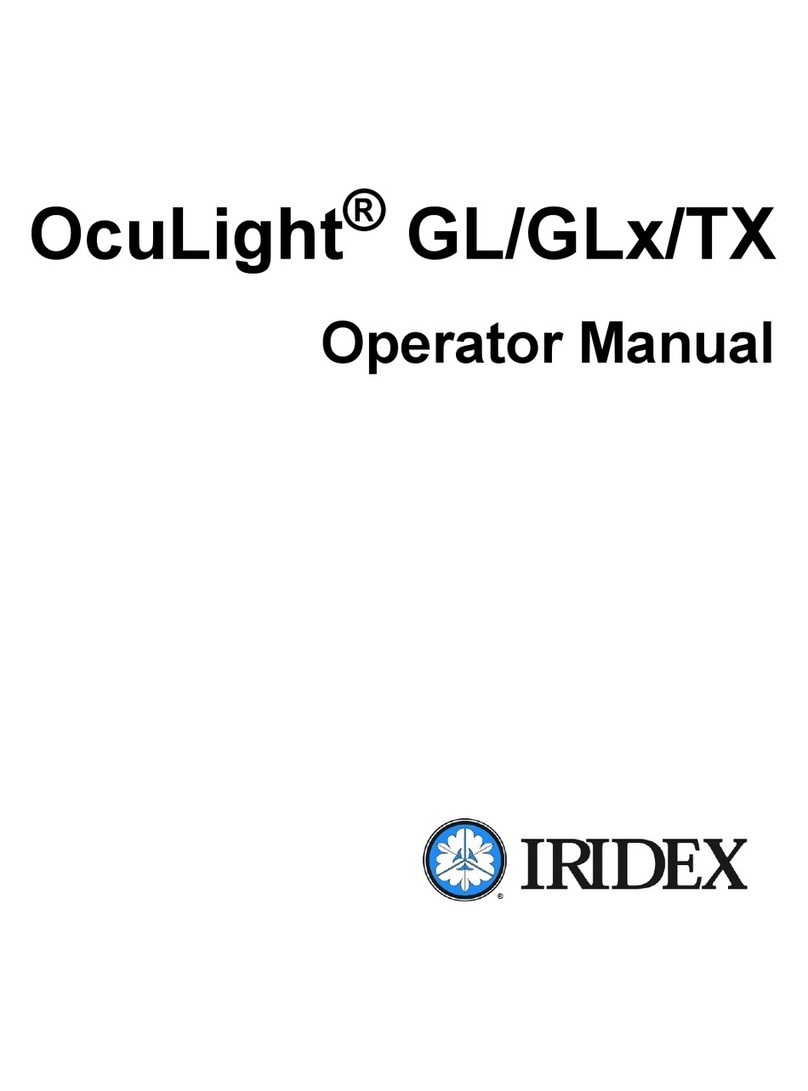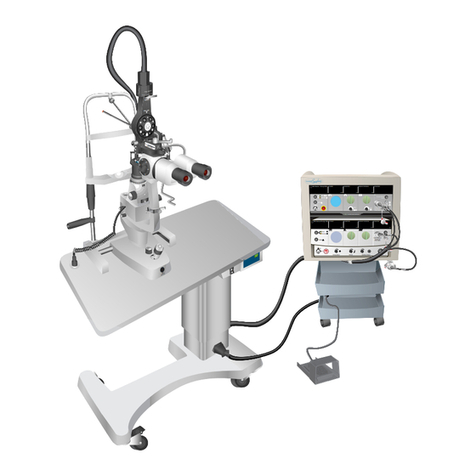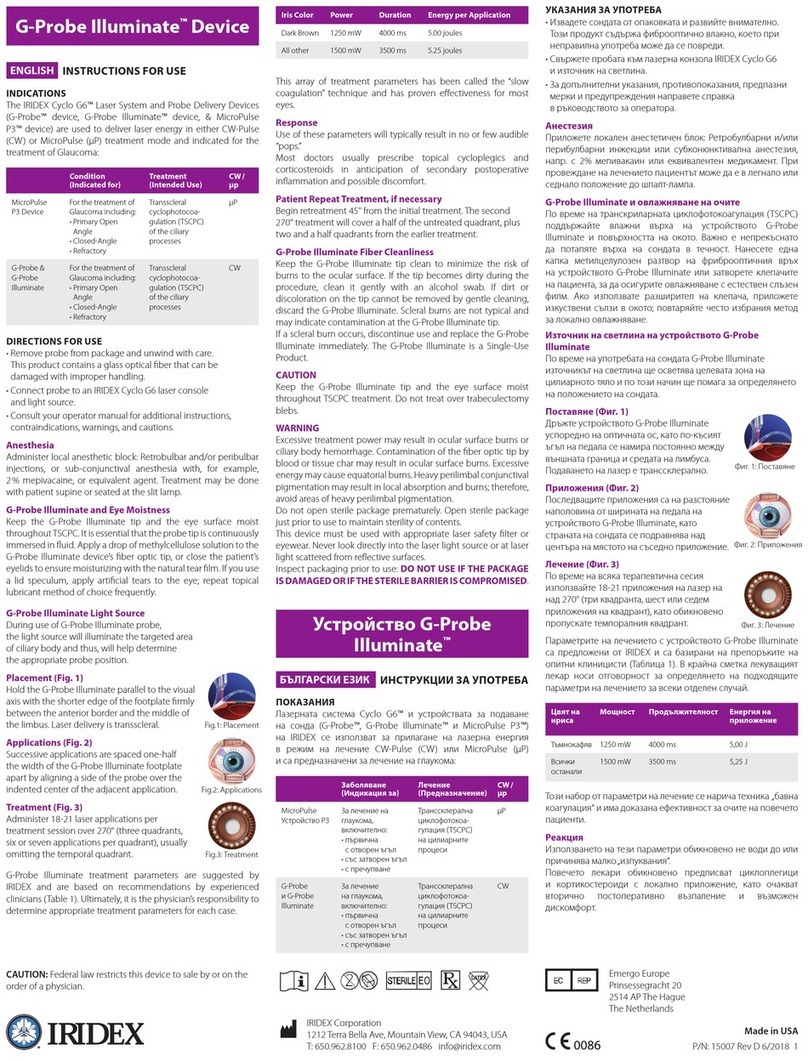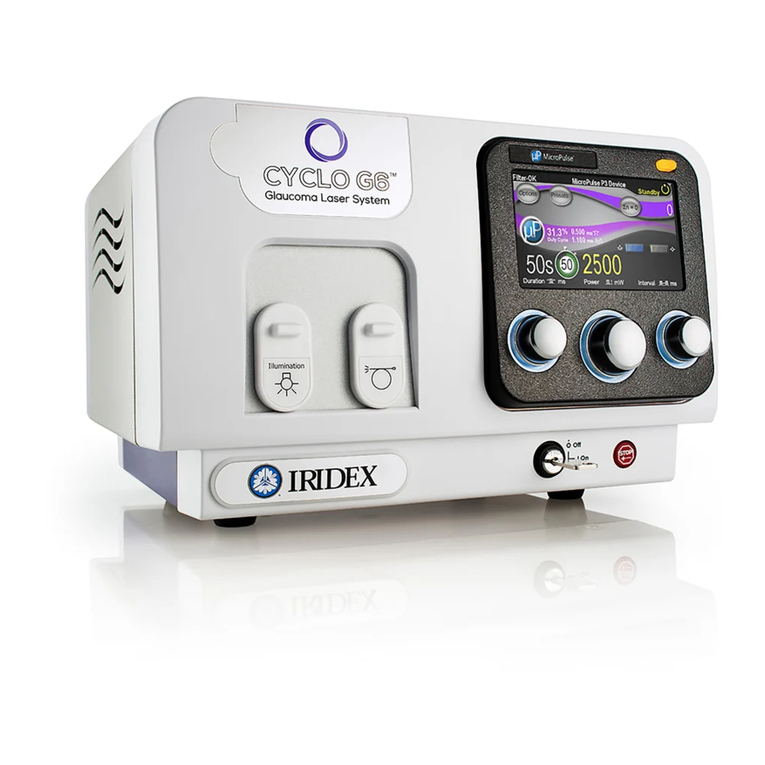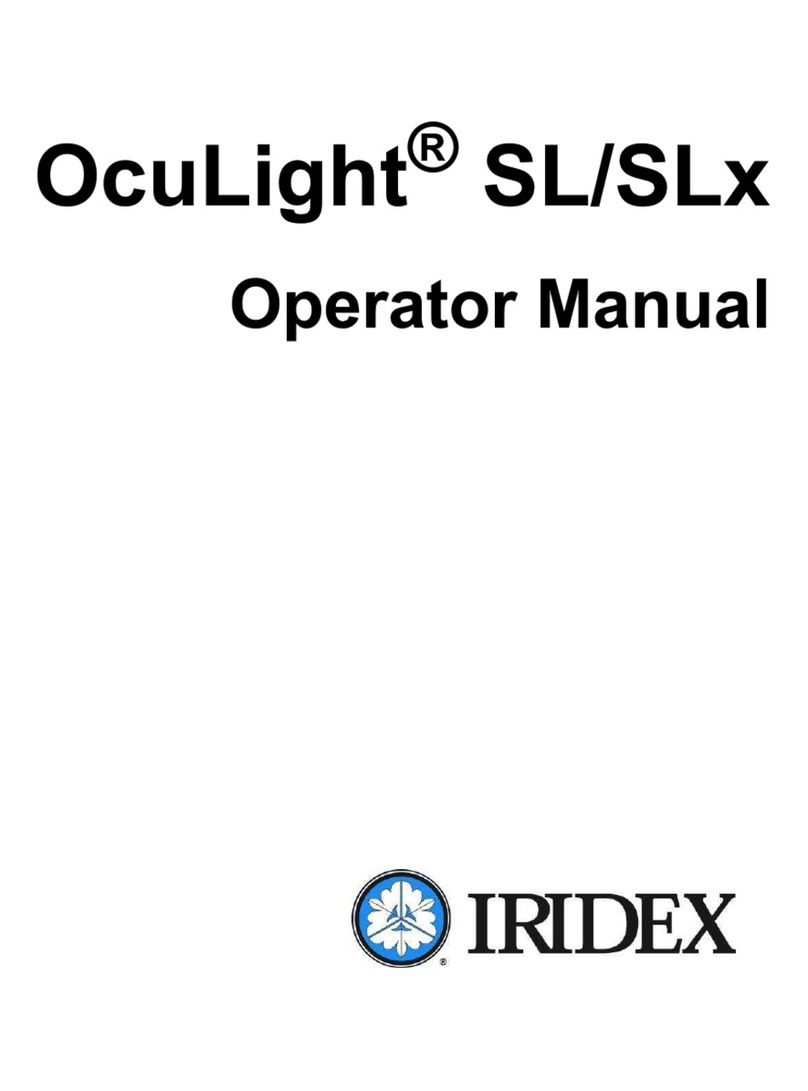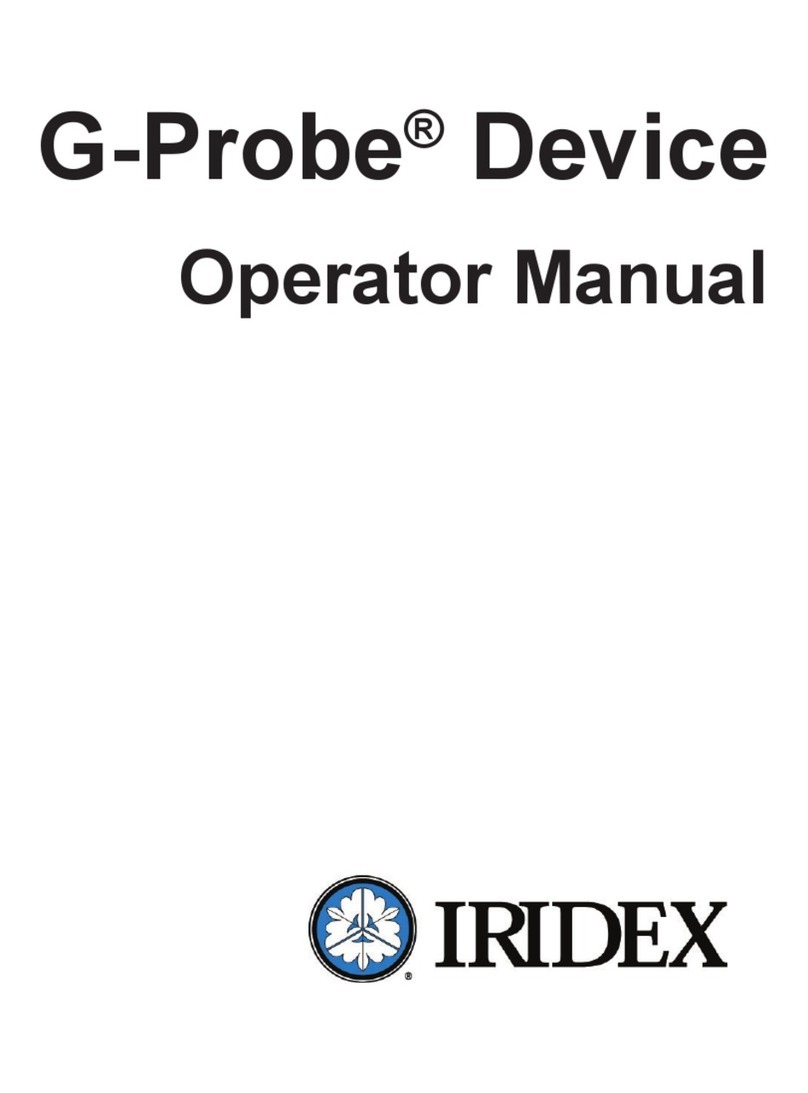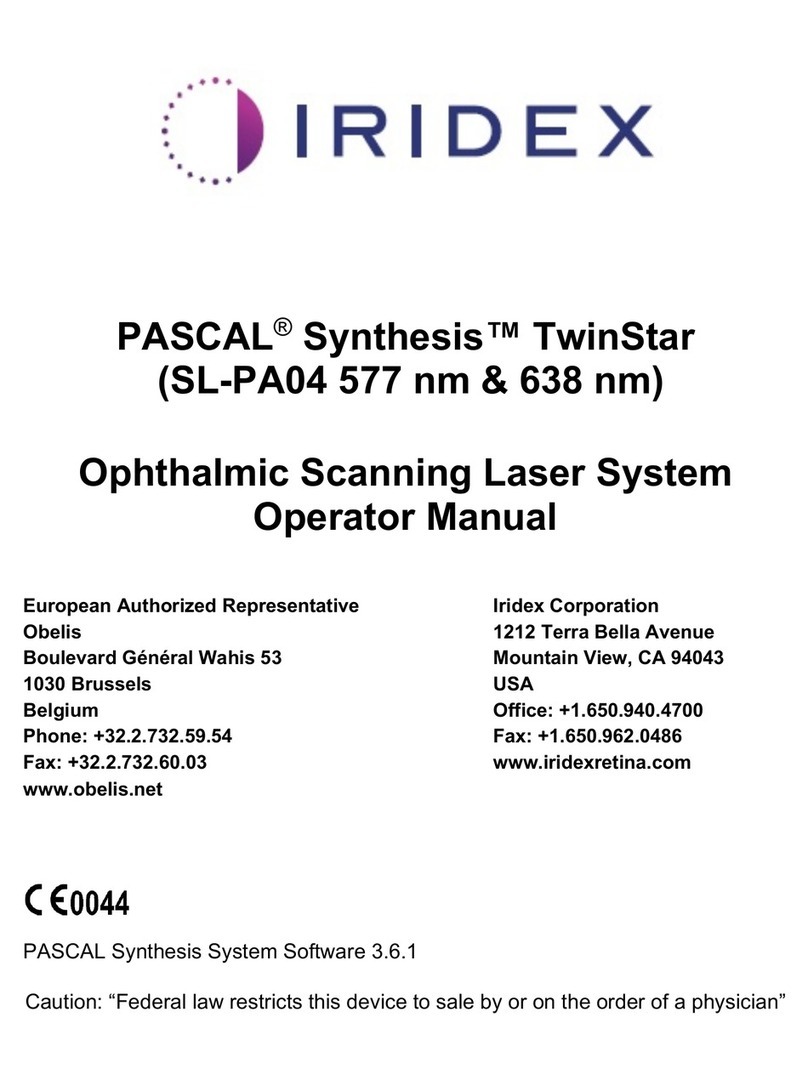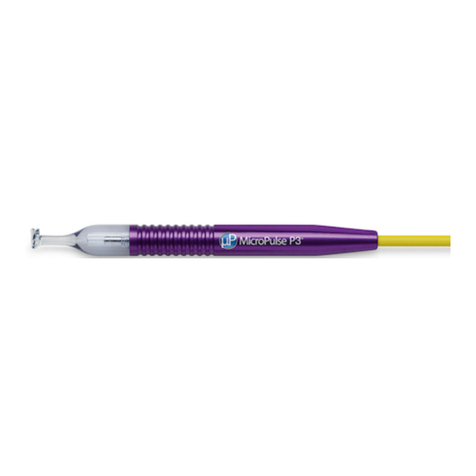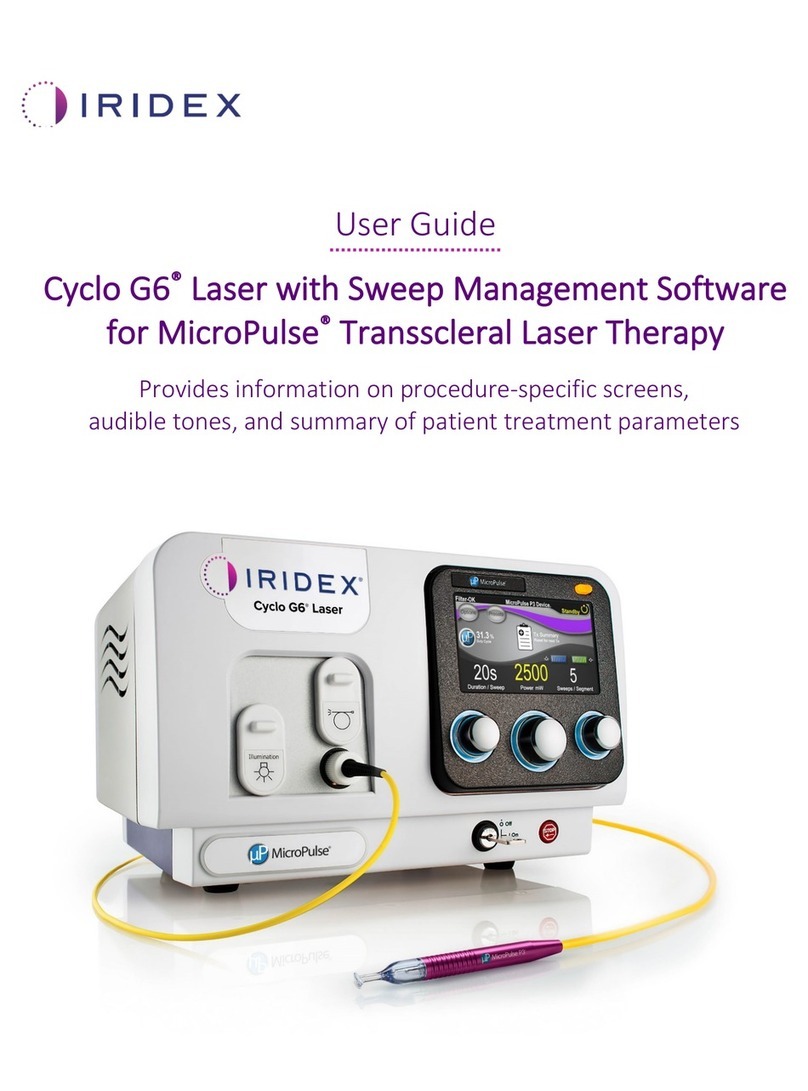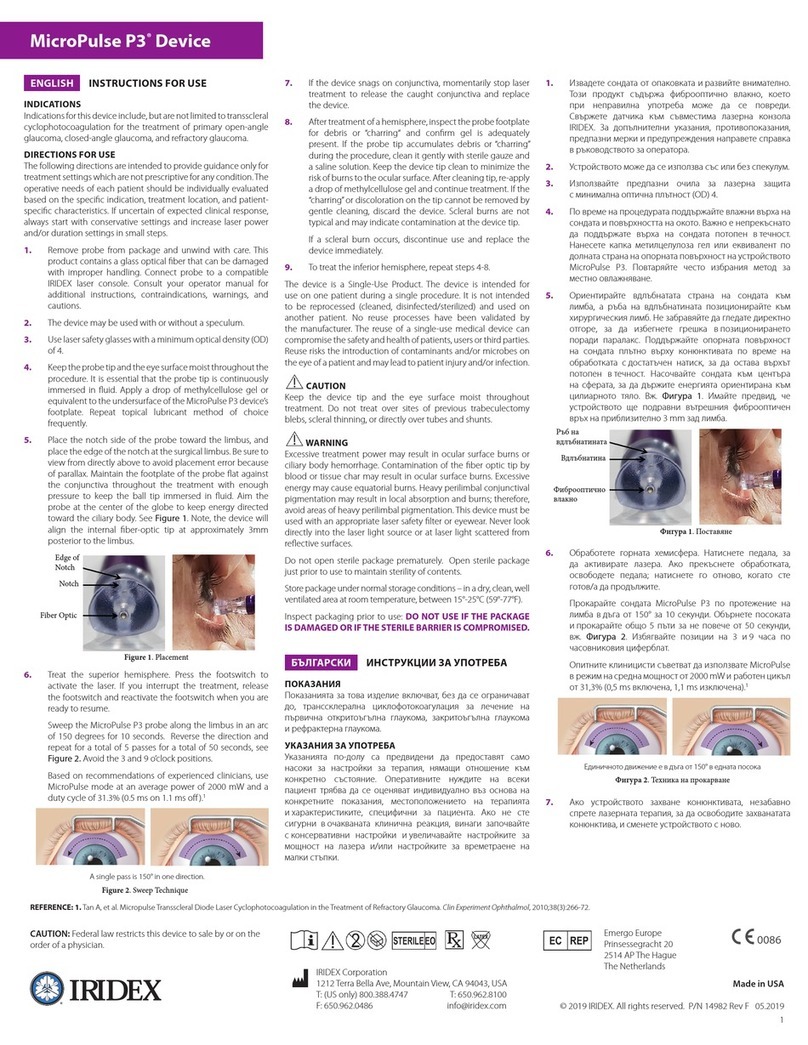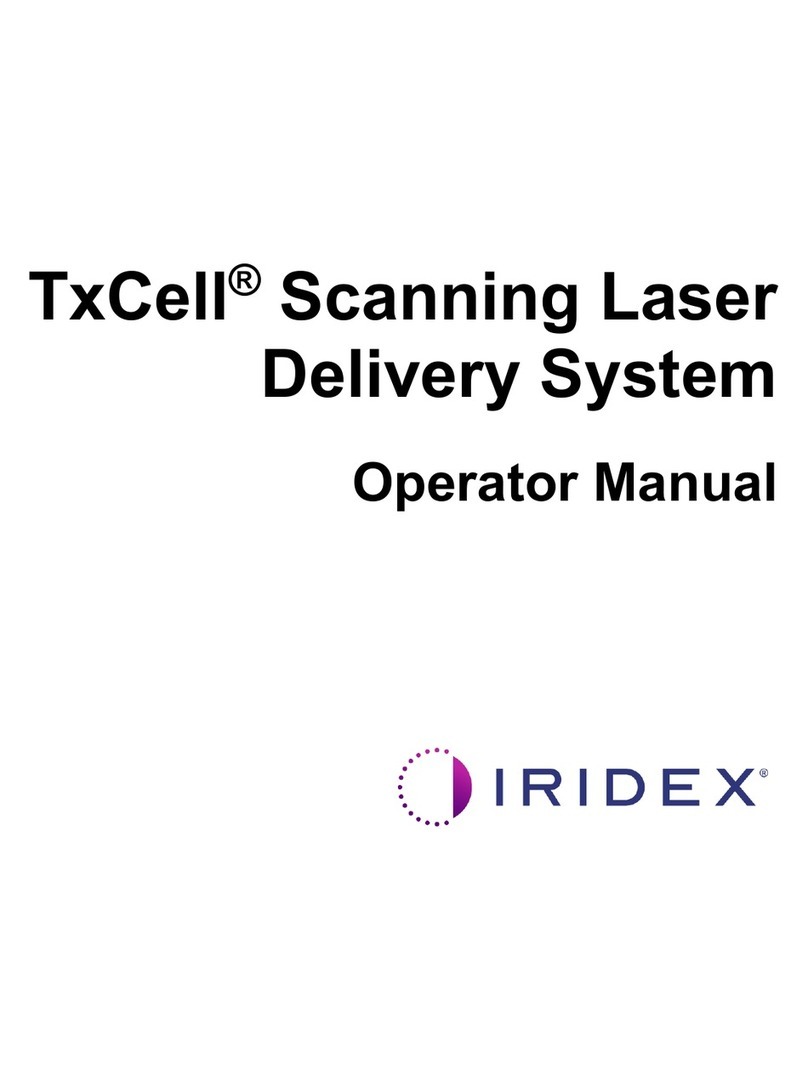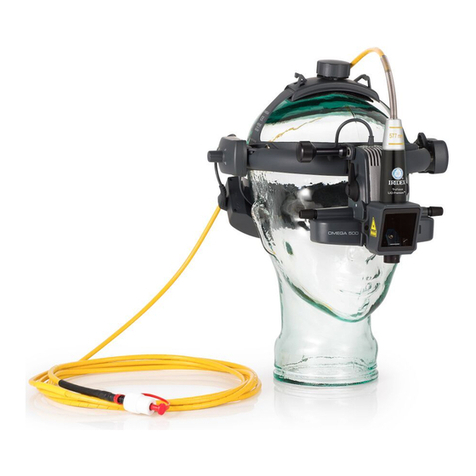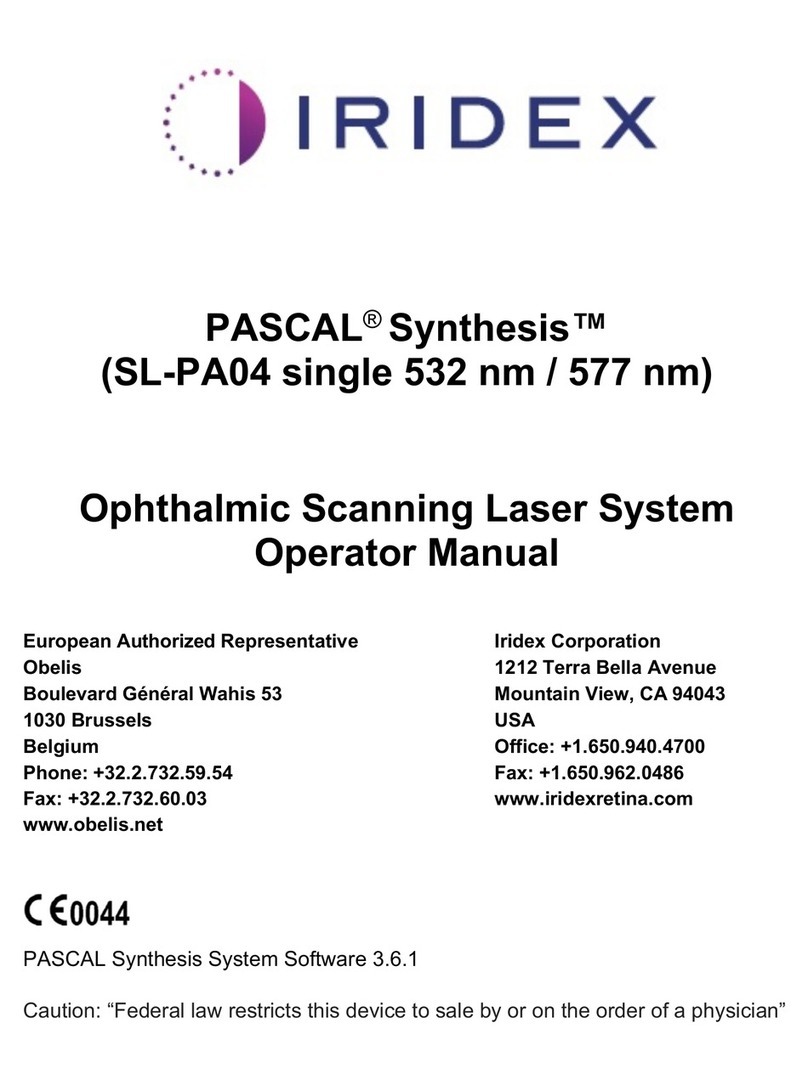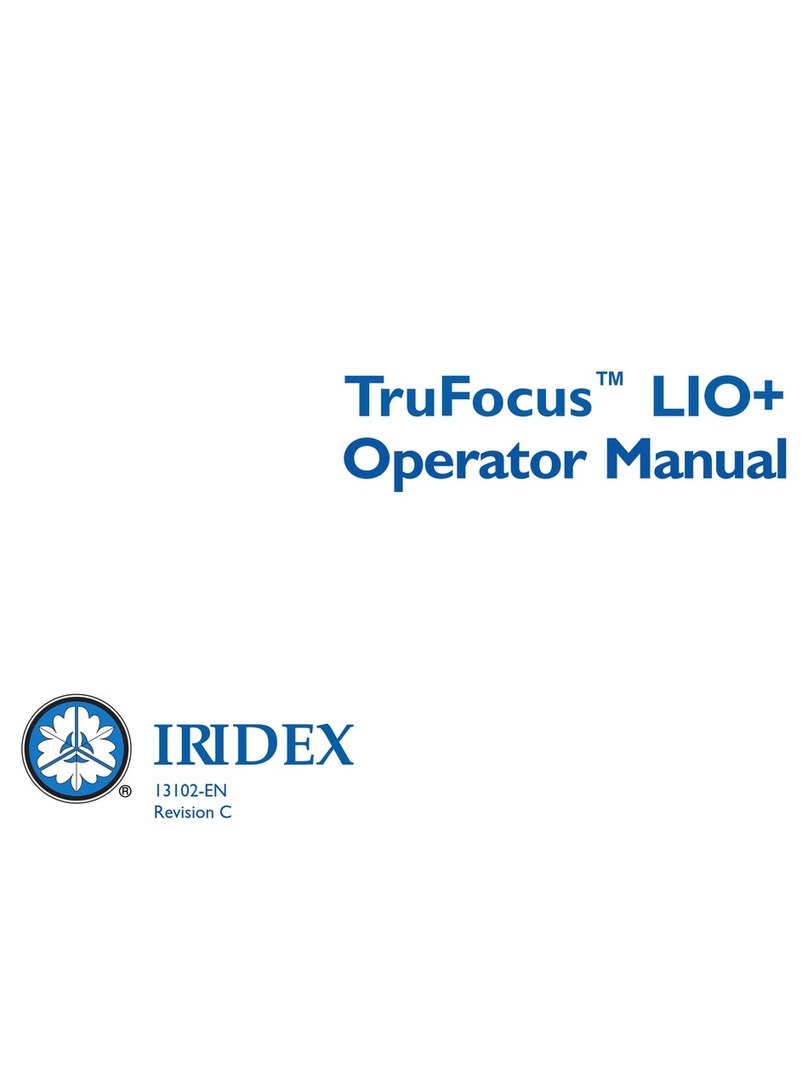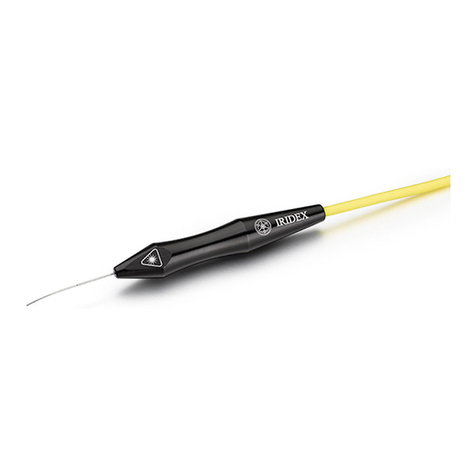
15510-EN Rev G Introduction 3
References
1Vujosevic S, Bottega E, Casciano M, Pilotto E, Convento E, Midena E. Microperimetry and fundus
autofluorescence in diabetic macular edema: Subthreshold micropulse diode laser versus modified
early treatment diabetic retinopathy study laser photocoagulation. Retina 2010;30(6):908-916.
2Vujosevic S, Martini F, Convento E, Longhin E, Kotsafti O, Parrozzani R, Midena E: Subthreshold
Laser Therapy for Diabetic Macular Edema: Metabolic and Safety Issues. Curr Med Chem 2013.
3FigueiraJ,KhanJ,NunesS,SivaprasadS,RosaA,deAbreuJF,Cunha-VazJG,ChongNV.
Prospective randomised controlled trial comparing sub-threshold micropulse diode laser
photocoagulation and conventional green laser for clinically significant diabetic macular oedema.
Br J Ophthalmol 2009;93(10):1341-4.
4Lavinsky D, Cardillo JA, Melo LA, Jr., Dare A, Farah ME, Belfort R, Jr. Randomized clinical trial
evaluating mETDRS versus normal or high-density micropulse photocoagulation for diabetic
macular edema. Invest Ophthalmol Vis Sci 52(7):4314-23.
Indications for Use - IQ 577 Models
This section provides information on the use of the laser in clinical specialties. Information is
provided by specialty and includes procedural recommendations along with specific indications
and contraindications. This information is not intended to be all-inclusive and is not intended to
replacesurgeontrainingorexperience.Theregulatoryinformationprovidedisapplicableonlyinthe
United States. If you use the laser for indications not included herein, you will be subject to 21 CFR
Part812,theFoodandDrugAdministration’sInvestigationalDeviceExemption(IDE)regulations.
For information regarding the regulatory status of indications other than those listed in this manual,
contact IRIDEX Regulatory Affairs.
IRIDEX does not make recommendations regarding the practice of medicine. References in
literature are provided as a guide. Individual treatment should be based on clinical training, clinical
observation of laser tissue interaction, and appropriate clinical endpoints.
The IRIDEX laser and the handpieces, delivery devices, and accessories that are used with it to
deliver laser energy in CW-Pulse™ or MicroPulse™ mode in the medical specialty of Ophthalmology.
Ophthalmology
Indicated for use in photocoagulation of both anterior and posterior segments, including:
• Retinalphotocoagulation,panretinalphotocoagulation(PR)andintravitrealendophotocoagulation
of vascular and structural abnormalities of the retina and choroids, including:
– Proliferativeandnonproliferativediabeticretinopathy
– Choroidalneovascularization
– Branchretinalveinocclusion
– Age-relatedmaculardegeneration
– Retinaltearsanddetachments
– Retinopathyofprematurity
– Macularedema
– Latticedegeneration
• Iridotomy,iridoplastyinangleclosureglaucoma,andtrabeculoplastyinopenangleglaucoma
